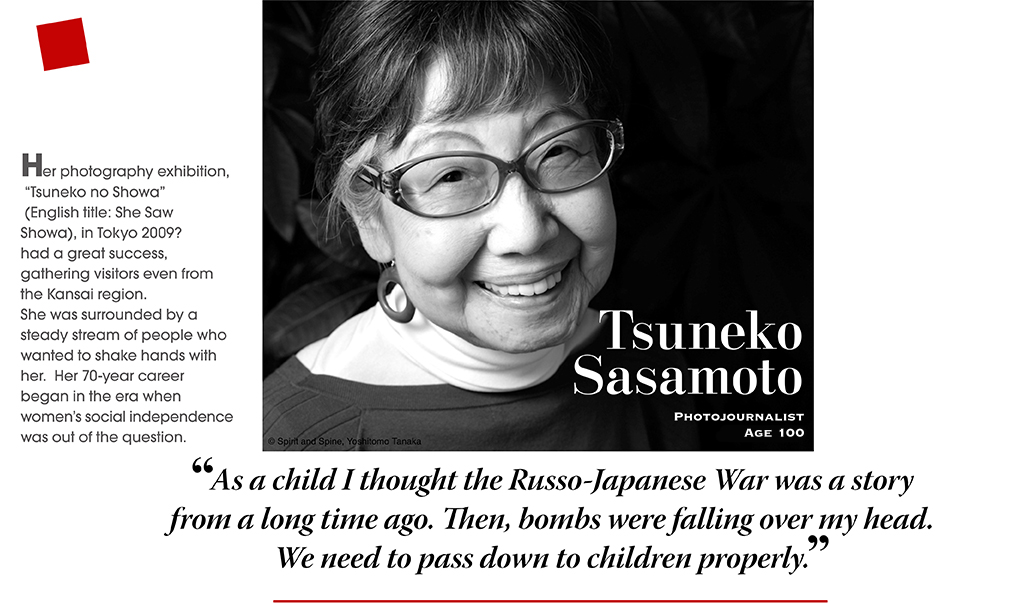
The first step for the first Japanese woman photojournalist was to enter the Photographic Society of Japan in 1940. Amongst tough, hardened newspaper veterans, she dedicatedly shot publicity photos for overseas. Soon after marrying, her husband enlisted in the army. Their new house in Tokyo was burned down in an air raid. Chiba, to which she evacuated, was also devastated by the succession of fire bombings. After the war, she captured the truth of a chaotic society and the people who lived in it.
Despite breaking with photography for a time, she was reinstated upon her successful solo show at the age of 70. A few years later, seeking to preserve the ways of life of Meiji women, she began a series of interviews with no guarantee of publication. She continued interviewing using a method of both recording and shooting by herself. Her pilgrimage to nearly one hundred women who were active at the time blossomed into a photo book by this woman who was herself only a few years younger. An expert in the recording of people and time, she is always ready for the challenge of the next page.

Tsuneko Sasamoto
Born in Tokyo in 1914 (the third year of Taisho). Honorable member of Japan Professional Photographers Society. She has had numerous exhibitions of photographs including “Showa-shi o Irodotta Hitotachi” (The People Who Colored Showa) at Doi Photo Plaza Shibuya in 1985. She is the author of many publications including Fudangi no Shozo (Portraits in Everyday Clothes), Leica de Shotto! Ojosan Kameraman no Showa no Sunappu (Shots with the Leica! Lady Photographer’s Snapshots of Showa), Kagayaku Meiji no Onna-tachi (Brilliant Women of Meiji), Kirameite Ikiru Meiji no Josei-tachi (Women of Meiji Lived Radiantly), revision of the prior book, and Sugao no Migishi Setsuko (Real Setsuko Migishi).
This article originally appeared in “Shinsei” magazine, February 2012 issue, published by RINRI Institute of Ethics. Partially rewritten to update for this internet release.
Chiyo Uno photographed by Sasamoto in 1994.
Copyright by Tsuneko Sasamoto.





































































































